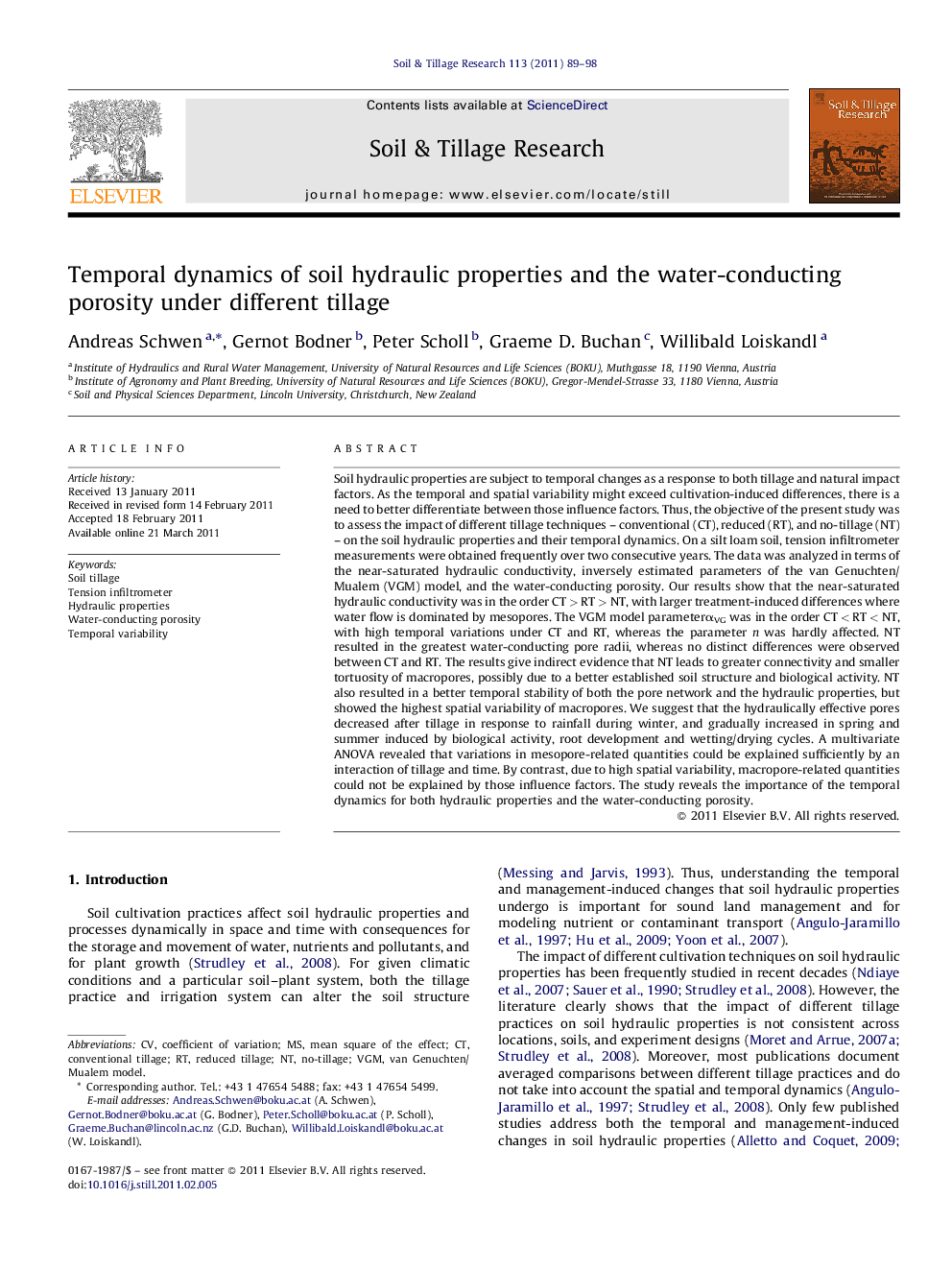| کد مقاله | کد نشریه | سال انتشار | مقاله انگلیسی | نسخه تمام متن |
|---|---|---|---|---|
| 306131 | 513075 | 2011 | 10 صفحه PDF | دانلود رایگان |

Soil hydraulic properties are subject to temporal changes as a response to both tillage and natural impact factors. As the temporal and spatial variability might exceed cultivation-induced differences, there is a need to better differentiate between those influence factors. Thus, the objective of the present study was to assess the impact of different tillage techniques – conventional (CT), reduced (RT), and no-tillage (NT) – on the soil hydraulic properties and their temporal dynamics. On a silt loam soil, tension infiltrometer measurements were obtained frequently over two consecutive years. The data was analyzed in terms of the near-saturated hydraulic conductivity, inversely estimated parameters of the van Genuchten/Mualem (VGM) model, and the water-conducting porosity. Our results show that the near-saturated hydraulic conductivity was in the order CT > RT > NT, with larger treatment-induced differences where water flow is dominated by mesopores. The VGM model parameterαVG was in the order CT < RT < NT, with high temporal variations under CT and RT, whereas the parameter n was hardly affected. NT resulted in the greatest water-conducting pore radii, whereas no distinct differences were observed between CT and RT. The results give indirect evidence that NT leads to greater connectivity and smaller tortuosity of macropores, possibly due to a better established soil structure and biological activity. NT also resulted in a better temporal stability of both the pore network and the hydraulic properties, but showed the highest spatial variability of macropores. We suggest that the hydraulically effective pores decreased after tillage in response to rainfall during winter, and gradually increased in spring and summer induced by biological activity, root development and wetting/drying cycles. A multivariate ANOVA revealed that variations in mesopore-related quantities could be explained sufficiently by an interaction of tillage and time. By contrast, due to high spatial variability, macropore-related quantities could not be explained by those influence factors. The study reveals the importance of the temporal dynamics for both hydraulic properties and the water-conducting porosity.
► Unsat. hydraulic conductivity was in the order conventional > reduced > no tillage.
► Main differences in unsat. hydr. conductivity occurred in the mesopore range.
► Indirect evidence: no-till leads to a higher connectivity of macropores.
► No-till has greater temporal stability of pore network and hydraulic properties.
► Variability of mesopores could be explained by tillage and time, macropores not.
Journal: Soil and Tillage Research - Volume 113, Issue 2, June 2011, Pages 89–98